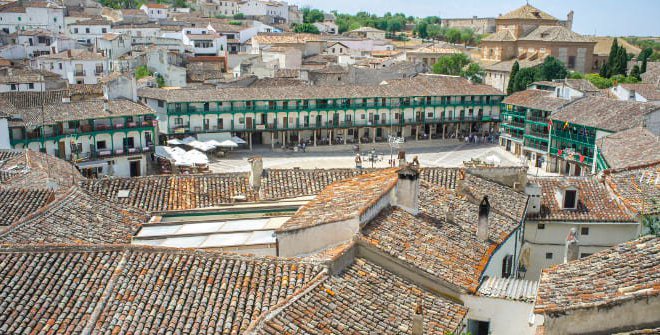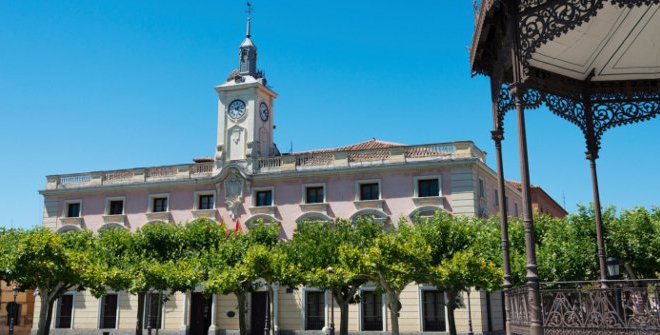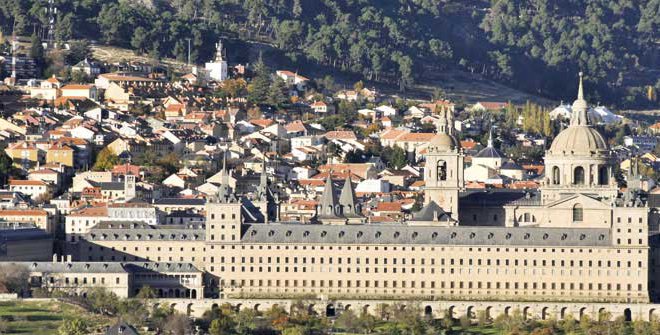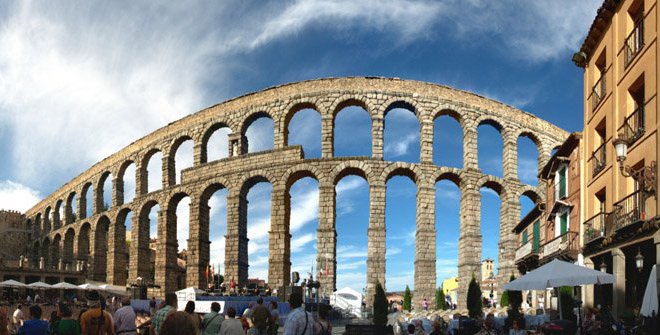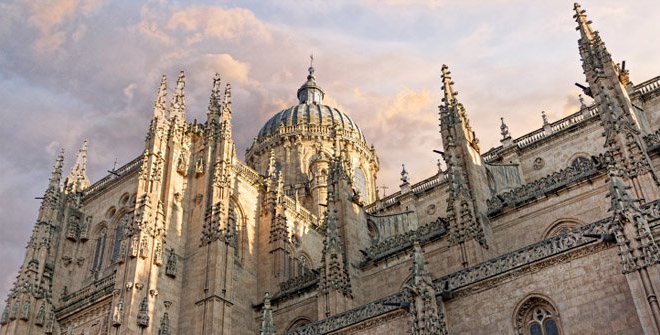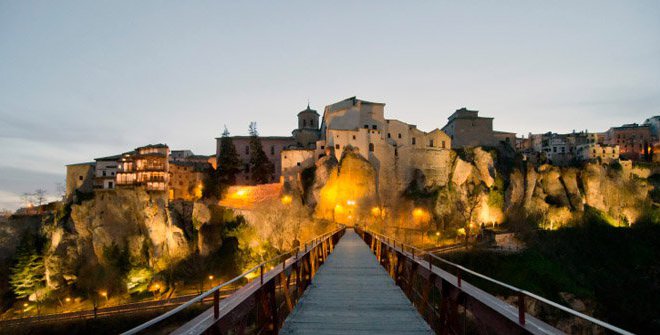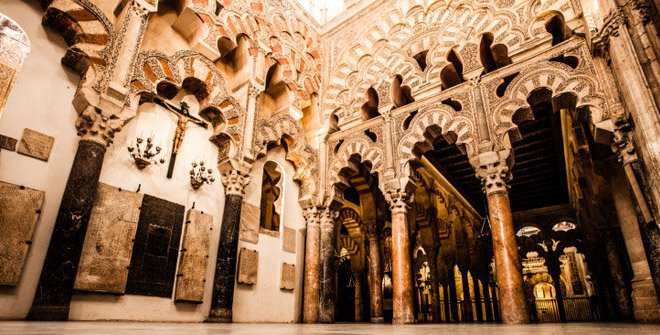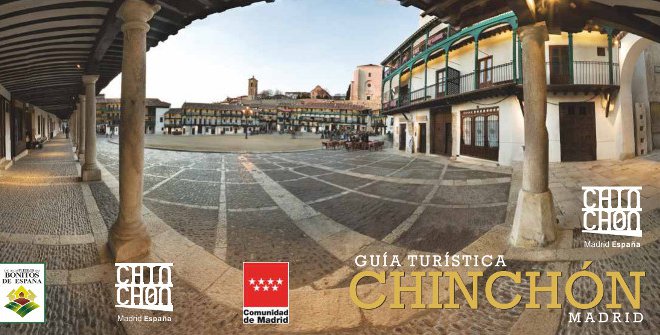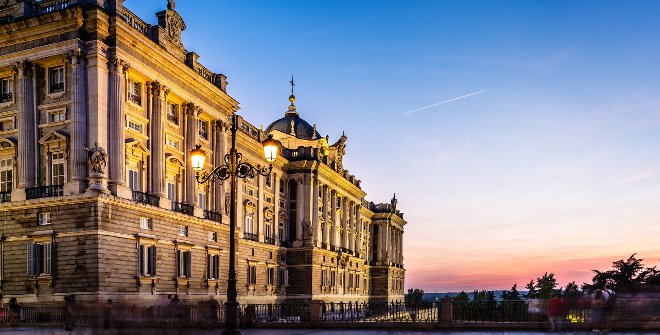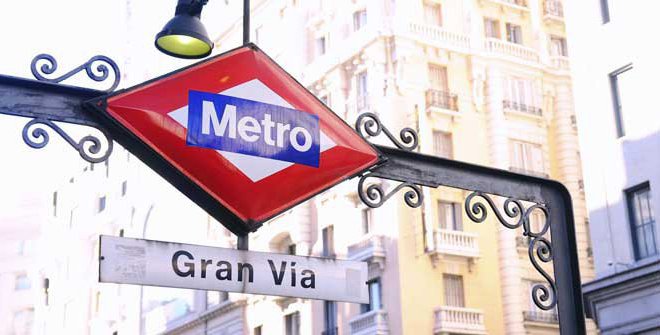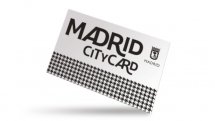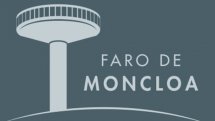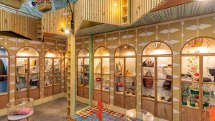Chinchón
Located about 45km from Madrid, on the Tagus-Jarama river basin, Chinchón is an old town surrounded by vineyards and olive groves. It has an iconic square, a host of venues serving top-notch Castilian dishes and a calendar packed with events.
Chinchón is, first and foremost, a square. Flanked by arcades, staggered roofs and 234 green wood balconies, the medieval square seems to mark the line from which all the other constructions in town sprawl.
Dating back to the Middle Ages, Chinchón’s Plaza Mayor is not only a fine example of Castile’s traditional architecture; it’s the nerve centre of the village. Throughout the years, it has hosted royal announcements and celebrations, mock spear combats, bullfights, livestock fairs, autos sacramentales plays, public executions and even film shootings (Cantinflas, Rita Hayworth, Orson Welles and John Wayne all took part in movies shot in Chinchón).
Lined with outdoor restaurants and bars, it’s the perfect place for a snack or a meal. The star dishes are the suckling pig, lamb, chorizo or kid, all roasted in a wood-fired oven. Other foods include roasted peppers, garlic and other traditional soups such as Potaje de vigilia, migas sautéed breadcrumbs, Cocido stew and sheep’s milk cheese. Gastronomy can be savoured at Restaurante La Villa specialised in suckling pig or La Casa del Pregonero, serving traditional cuisine.

Carnival and Medieval Market
In February, the square plays host to Carnival celebrations and a huge Medieval Market, featuring, parades, shows and an arts and crafts market. The event commemorates one of the times the Catholic Monarchs visited Chinchón, and it’s the perfect opportunity to try local cuisine. In August, during the local fiestas, the square turns into a bullring hosting bullfights, shows, verbenas (traditional outdoor festivals), running of the bulls, and sporting and religious events.
A visit to Chinchón would not be complete without savouring some of their gastronomic delights: from traditional pastries with funny names like ‘novice tits’ or ‘friar’s balls’- made with the recipes of Poor Clare nuns - to flavoursome garlic, local wines and, of course, anisette. A Wine and Anisette Festival is held every year in early April and October brings the Bullfighting Charity Festival, followed by the Garlic Festival. On Easter Saturday, around 250 locals take part in the re-enactment of the Passion of Jesus. As a prelude to the bullfighting season, the first running of the bulls of the year takes place on 25 July, followed by a novillada (a fight with young bulls and bullfighters).
Places of interest
‘Chinchón has a tower without a church and a church without a tower,’ goes the popular saying. The Clock Tower is the only remnant of the old church, whereas the new church, Nuestra Señora de la Asunción, has no tower, although it does boast a painting by Goya entitled Assumption of the Virgin Mary. Nuestra Señora del Rosario, a church built to venerate the Virgin Rosario, has two side chapels that were used as prison cells during the Spanish Civil War
Next to the Clock Tower stands the Lope de Vega Theatre, whose curtain is a large canvas by Luis Muriel depicting village scenes. The former monastery of the Augustinians houses the Parador de Chinchón hotel, but the Castle of the Counts of Chinchón, which has been rebuilt several times, is closed to visitors.
The Casa de la Cadena, a Baroque building dating back to the end of the 17th century where King Philip V stayed when he visited Chinchón in1706, can also be visited, as well as the Gothic Casasola Castle built in the 15th century, where politicians and army officers supporting Alfonso XII stayed. To find out more about the history of Chinchón, the Interpretation Centre is a space that presents all of the informative content in an attractive way with a screening room, informative panels regarding culture, history and famous people.
How to get there:
By car: 45-50min drive along A-3 highway and M-311 road.
By bus: 45min ride from Conde de Casal (bus line 337).
Useful links:
